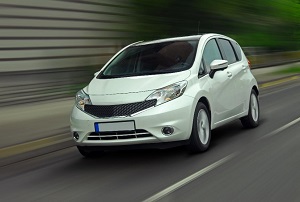- Advanced Driver Assist Systems
- Transportation Efficiencies
- Automated Vehicles
- Policy and Regulation
- Policy and Regulation
Safety Must Come Before All Else with Automated Driving

There are plenty of potential benefits that go along with automated driving, including providing mobility for those that can’t drive, making more work or leisure time available while commuting, and eliminating the parking lot crawl. But the foremost priority in introducing automated systems must be safety. That may mean slowing down deployments to make sure we have all the right pieces in place first.
Examine the Data
On the same day that US Secretary of Transportation Elaine Chao announced updated and streamlined federal guidelines for automated driving, the National Transportation Safety Board (NTSB) issued its report in a fatal crash involving Tesla AutoPilot in May 2016. While the Department of Transportation (DOT) streamlined the voluntary guidelines first issued by the Obama administration in 2016, no new enforceable regulations have been proposed. In fact, enactment of any new federal motor vehicle safety standards is unlikely during the current administration in Washington.
The NTSB examination of the crash that led to the death of Joshua Brown was its first involving automated driving technologies. "In this crash, Tesla’s system worked as designed," NTSB Chairman Robert Sumwalt said. However, the AutoPilot interface did an inadequate job of informing drivers of what it was actually capable of and ensuring that it was only used in appropriate circumstances.
Recognize Limitations
AutoPilot is designed to provide semi-automated driving only on divided, limited access highways. The technology used—forward-facing radar and cameras—is currently not adequate to reliably detect vehicles crossing the path of travel in challenging lighting conditions or even to consistently detect lane markings for the steering control.
NTSB recommends that automakers add safeguards to limit where these lower level automation systems can be engaged and more actively monitor drivers to ensure they are ready to take over when the system cannot function. Some automakers have already started doing this, including General Motors. GM’s SuperCruise system includes high definition maps of more than 160,000 miles of divided, limited access highway across North America, and the system is geofenced to prevent activation anywhere but these roads. GM delayed the introduction of SuperCruise prior to the Tesla crash to add these and other features.
Educate Customers and Staff
Companies developing automation technologies also need to get more actively involved in educating customers and their sales and support staff about how these systems work. The National Safety Council launched an education program in 2016 dubbed “My Car Does What?” to put materials in state motor vehicle licensing offices. More recently, supplier Bosch launched the online Automated Mobility Academy to help educate consumers about new technology.
Deploy Highly Automated Vehicles
As highly automated vehicles (HAVs) approach initial deployments in the next 4 to 5 years, engineers working on the production designs are beginning to implement the features that will be required to ensure safety. Current advanced driver assist systems (ADAS) do just that, assist the driver. Ultimately, the driver can still control the vehicle and bring it to a stop even if traditional or advanced assists fail. In an HAV, there may not be anyone to take over or a control interface to use.
Guidehouse Insights’ Automated Driving Vehicle Technologies report projects that by 2026, nearly 9 million redundant high performance compute platforms will be needed for HAVs. GM’s third-generation automated Chevrolet Bolt prototype has been developed with production in mind and it includes the necessary redundant systems.
User experiences that properly inform the people in the vehicle and are ready to operate safely even with no one aboard will be crucial to successful deployment of HAVs. Every company—from upstarts like Tesla to the oldest like Mercedes-Benz—must take this into account.